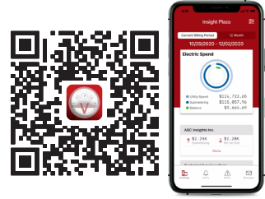Ripple Effects: How Water Recovery Boosts Retail's Bottom Line
Too many properties think water usage isn't expensive enough to pay attention to. That attitude can cost you.
Over the last year, we’ve been working with two large retail property owners frustrated with their operating margins. Our rate analysts and operations engineers went through the data to help stop the bleeding. They found:
- Water meters were outright missing. They were on the plans but had never been installed. Missing meters is a double hit because the lack of meters inflates both common area and operating costs.
- In several cases, the water meters that had been installed were transmitting the wrong units, causing confusion and mistakes.
- Some meters were broken, so their data was wrong (in any unit).
In the end, these companies were able to recover a total of $200K–$300K in water expenses (we’re giving a range here because some of this process is ongoing).
Losing money through incorrect tenant utility meters isn’t uncommon among Class A REITs, and certainly the same problem exists in smaller types of real estate.
In particular, water costs don’t seem to get the same scrutiny as gas and electricity. And that could cost you more than you might expect.
3 Causes of Low Water Recovery
Here are the top factors, organized by category, that decrease how much you can recoup in water utility expenses:
1. On-Site Challenges
- Broken meters/lack of maintenance/problems with transmitters
- Accessibility issues
- Incorrect labeling of units
- Reading challenges
- Variation in meter faces
- Problems reading fixed zeroes
- Identification of meters that should be read "backward"
2. Calculation Challenges
As we’ve mentioned elsewhere on our blog, your meters likely measure water consumption in gallons but your utility provider bills you in hundreds of cubic feet. Are you sure your conversions are correct?
We often see units being converted from gallons to cubic feet but not to the specified hundred cubic feet (denoted as HCF or CCF, where that first C is Latin for “hundred”).
Unsurprisingly, tenants want to be billed only for what they use. And when they’re billed the wrong numbers, they get upset. To put some numbers on this, let’s say a tenant uses 5,000 gallons in the billing period. If the spreadsheet only converts gal to cubic feet, the tenant will be charged for 668.4 units of water at CCF prices, rather than only 6.684 units. How would you feel if Starbucks charged you $700 instead of $7 for that espresso macchiato?

3. Time Challenges
The saying “Time is money” resonates with most people. But we don’t often talk about how this phrase can be true in both directions.
Sometimes going faster saves money. And sometimes going slower does because then you’re able to catch costly details.
Where time is well spent:
- Clarity on your lease terms
- Regular review of submetering totals against the utility provider’s total (to identify irrigation leaks, among other potential problems!)
If you’re a utiliVisor customer, we check your submetering totals against the utility provider's every billing period. Check the Exceptions Report section of your billing package to see if we’ve flagged any issues for you, and always feel free to contact us with any questions!
7 Recommendations for Higher Water Cost Recovery
After 40+ years in water metering and monitoring, here are the actions that we've seen really move the needle on water cost recovery:
- Standardize on a quality meter type for easier installation, maintenance, and reading.
- Ensure water meters are easily accessible and visible. (It’s not unusual to see water meters 26 feet up or practically covered by a wall built too close after the rough-in.)
- If a meter is inaccessible, put a remote transmitter on the meter and then check regularly that both the meter and the transmitter are working accurately (see next bullet).
- Review your utility total against your submeter totals each billing period. If things aren’t adding up, it’s time to go troubleshooting before the problem gets worse.
- Review lease language to determine if any tenants haven’t been billed for water that should have been billed so you can start recovering those costs.
- Conserve water where you can by fixing leaks, keeping high consumers aware of their usage, and using low-flow diffusers where appropriate.
- Nice to have: If you can, it’s helpful to have a check meter to verify all the branches serving the area for easier troubleshooting.
No Budget to Replace or Add Water Meters?
Budgets are tight these days. Some leases call for the tenants to pay for replacement meters. But that's not everyone.
If it's not your situation, consider starting a fund to cover those business costs by increasing the estimated cost of tenant water usage, starting with the highest consumers.

Why Water Recovery Matters
Because water rates and usage are relatively lower, water may not be as high on your radar as gas and electric when it comes to cost recovery. But if your margins are tight and your water bills are relatively high, paying more attention to water losses can really help.
As an extreme example, say your water bill is $25,000 per month. If you can save just 50% of those costs, that adds up to a refreshing, thirst-quenching $150,000 a year.
We’ve said it before and we’ll continue to beat this drum: The most cost-effective way to improve your bottom line is to consistently and accurately recover your utility costs. Otherwise, you could be literally watching your money go down the drain.
Curious how to trim down energy usage?
See how MSK saves using RTEMAbout utiliVisor
Your tenant submetering and energy plant optimization services are an essential part of your operation. You deserve personalized energy insights from a team that knows buildings from the inside out, applies IoT technology and is energized by providing you with accurate data and energy optimization insights. When you need experience, expertise, and service, you need utiliVisor on your side, delivering consistent energy and cost-saving strategies to you. What more can our 45+ years of experience and historical data do for you? Call utiliVisor at 212-260-4800 or visit utilivisor.com

